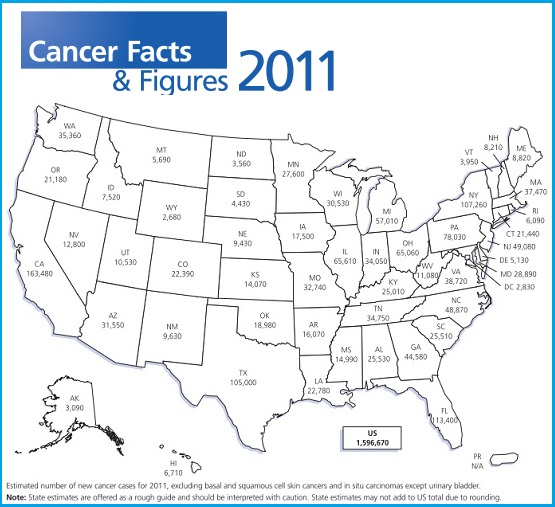
|
|

|
|
| April 25, 2024 |
|
U.S. cancer death rates decline, but disparities remain 
Newly published statistics from the American Cancer Society show that cancer death rates in the U.S. continue to decrease, but that cancer death rates for the least educated segment of the population are 2 ˝ times higher than for the most educated.
The annual report, “Cancer Statistics, 2011,” published in the American Cancer Society’s journal “CA: A Cancer Journal for Clinicians,” and its companion piece “Cancer Facts & Figures 2011,” estimates the numbers of new cancer cases and deaths expected in the U.S. this year. The estimates are some of the most widely quoted cancer statistics in the world. A total of 1,596,670 new cancer cases and 571,950 deaths from cancer are projected to occur in the U.S. in 2011. Between 1990 and 2007, the most recent year for which data is available, overall death rates decreased by about 22% in men and 14% in women. This translates to about 898,000 deaths from cancer that were avoided. The American Cancer Society credits improvements in cancer prevention, early detection, and treatment. "The nearly 900,000 cancer deaths avoided over a 17-year period stand in stark contrast to the repeated claim that cancer death rates have not budged," said John R. Seffrin, Ph.D., chief executive officer of the American Cancer Society and its advocacy affiliate, the American Cancer Society Cancer Action Network (ACS CAN). "Nonetheless, we refuse to be satisfied, and are committed to doing whatever it takes, not only to ensure cancer death rates continue to drop, but to accelerate the decline." Lung cancer death rates among women are falling more slowly than those among men because women began smoking in large numbers, and subsequently quitting, later than men. As a result, lung cancer death rates have been declining since 1990 in men, but have just begun to decline in women. Lung cancer accounts for 28% of the cancer deaths in men and 26% of the cancer deaths in women. Cancers of the lung, prostate, and colon/rectum in men, and cancers of the lung, breast, and colon/rectum in women continue to be the most common causes of cancer death. These four cancers account for almost half of the total cancer deaths among men and women. Each year, American Cancer Society researchers include a special section in “Cancer Facts & Figures” highlighting an issue of cancer research or care. This year, the topic is cancer disparities and premature deaths. Researchers estimate that 37% of premature cancer deaths (more than 60,000) could potentially have been avoided, if all Americans ages 25 to 64 in the U.S. in 2007 had the same cancer death rate as the most educated segment of the population. The disparity was largest for lung cancer, for which the death rate was 5 times higher in the least educated than for the most educated. This is consistent with smoking rates by level of education: 31% of men with 12 or fewer years of education are current smokers, compared to 12% of college graduates and 5% of men with graduate degrees. Reducing cancer disparities, according to the report, will require breaking down barriers to health promotion and wellness care. These barriers include lack of health insurance, lack of transportation to health facilities, low literacy, and speaking little English. (Source: American Cancer Society) Story Date: June 18, 2011
|